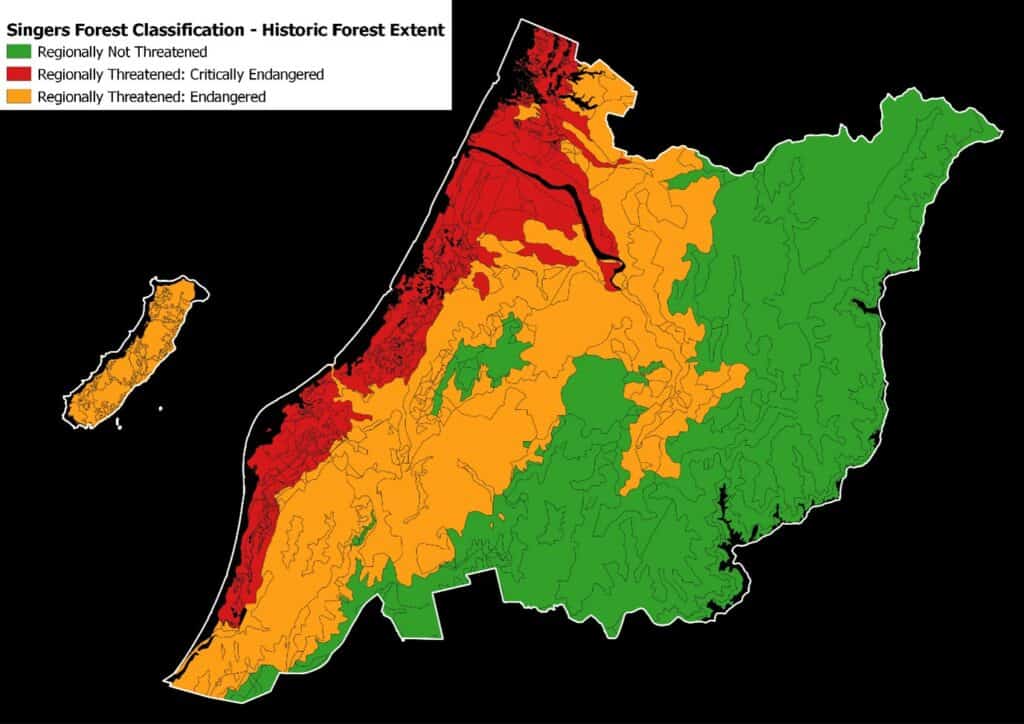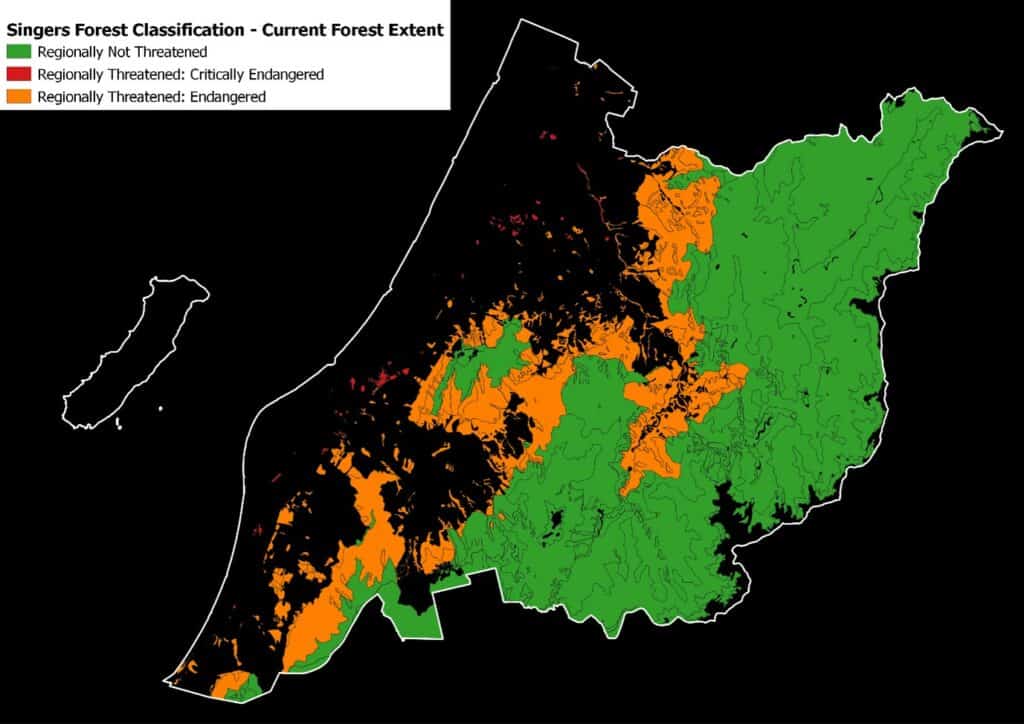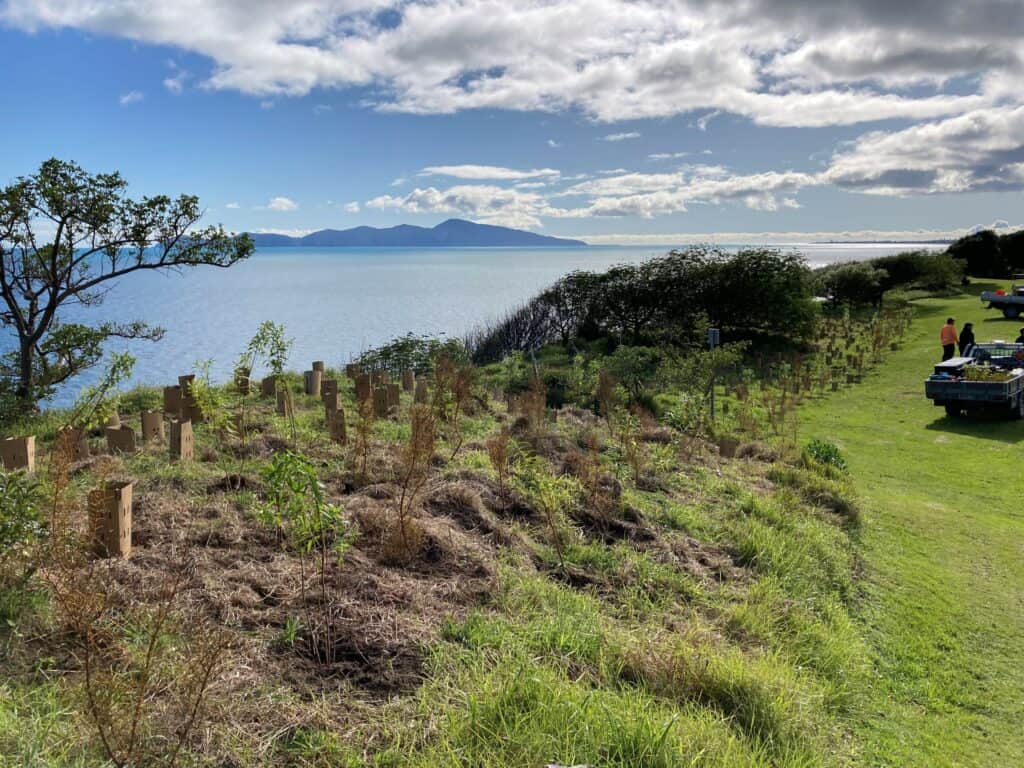By Andy McKay, 5 September 2022
Team Leader, Environment & Ecological Services (Te Kaiārahi Rōpū Ratonga Taiao me te Hauropi), Kāpiti Coast District Council
The Kāpiti Coast is blessed with some incredibly beautiful landscapes. From a biodiversity perspective, the jewel in the crown is Kāpiti Island, which provides a guiding light for those of us working in the conservation space on the mainland.
Kāpiti Coast’s Forest and Wetlands
DespiteKāpiti Island historically being farmed, a large proportion of the original forest still remains. Kāpiti Island has been predator free since 1999 and the recovery of the forest flora and fauna is well documented.
Unfortunately, like much of Aotearoa New Zealand, most of our mainland lowland forests were cleared for farming, predominately over the last 200 years.
Singers Forest Classification shows this destruction in stark relief in the images below. More than half of the forest that used to exist on the Kāpiti Coast now only exists as remnants and is considered endangered or critically endangered.
From a carbon sequestration point of view, there is huge potential to replant and restore these endangered and critically endangered forest ecosystems, along with the associated biodiversity benefits.
While we don’t have this same level of detail for wetlands, we do know that only about 3% of wetlands are remaining throughout the Wellington region. Wetlands are often biodiversity hotspots, providing important ecosystem services as well as refuge for a range of native birds. We also know that peat wetlands especially, when healthy, can be important ecosystems for carbon sequestration.
Our dunes
As a coastal district, our dune ecosystems are incredibly important. While they may not offer much in the way of carbon sequestration, healthy dunes provide a natural buffer to sea level rise and inundation. These are dynamic ecosystems, naturally growing and being eroded over time in a cyclical nature. By having the right species in place such as kōwhangatara (spinifex), pīngao and wiwi, we can give the dunes the best opportunity at resilience as weather events become more extreme.
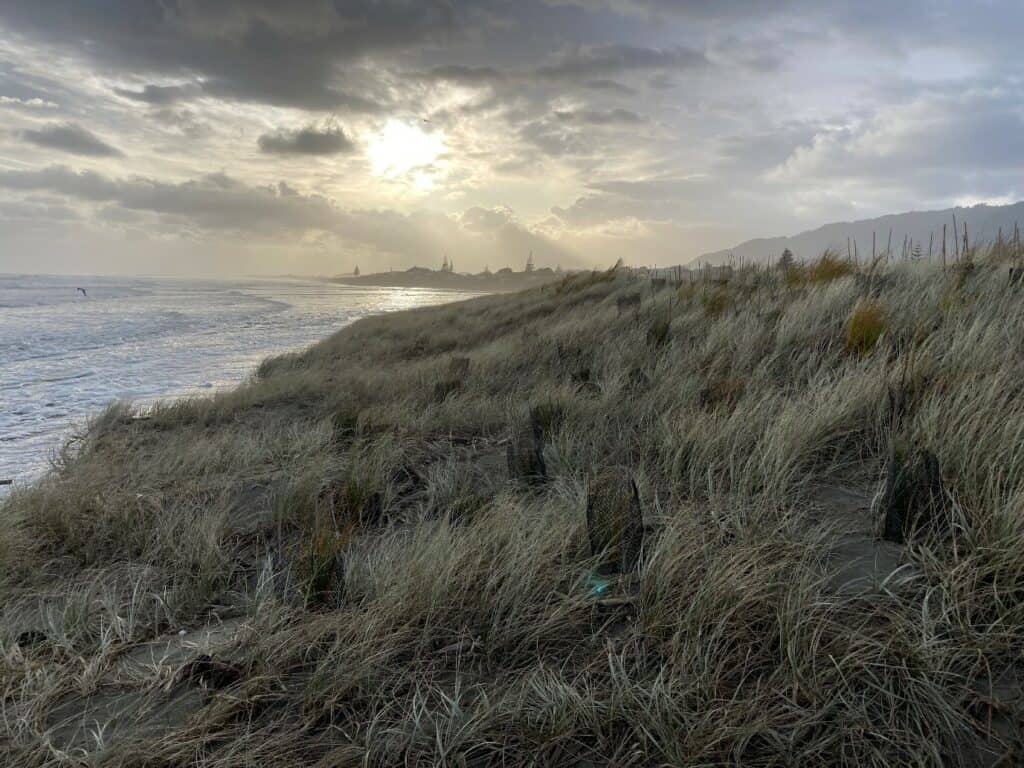
Pest animal and plant control
From both a carbon sequestration and biodiversity point of view, healthy ecosystems are the most resilient when it comes to both the impacts of climate change and the ability to sequester carbon.
Forest and Bird released a report in 2021 estimating that controlling pest animal species “to the lowest possible levels would increase the carbon sequestration of native ecosystems by 8.4 million tonnes of CO2 per year, which is equivalent to nearly 15% of New Zealand’s 2018 net greenhouse gas emissions.”
Invasive weed control is important too. The Parliamentary Commissioner for the Environment released a report in 2021 called Space invaders: A review of how New Zealand manages weeds that threaten native ecosystems. This report states that there are now more than 25,000 introduced plant species in Aotearoa New Zealand. Over the past 200 years 1,800 species have naturalised, meaning they have escaped cultivation and can sustain wild populations.
This is a problem because invasive plant species can derail natural forest regeneration which has flow on effects in the wider ecosystem.
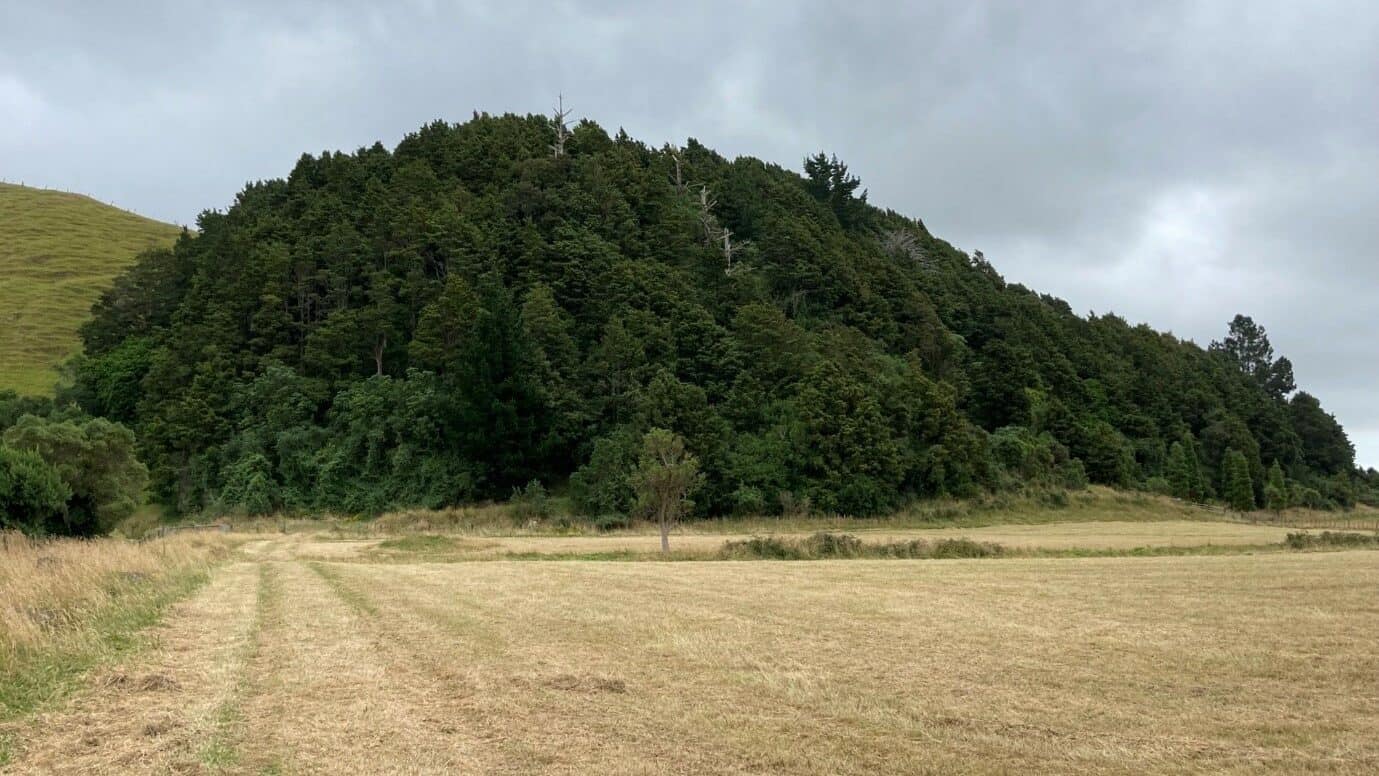
Ecological sites and KNEs
Under the Resource Management Act 1991, the Kāpiti Coast District Council is required to identify and map out significant natural areas (SNAs) on public and private property. Under the Operative District Plan 2021 these are referred to as Ecological Sites.
Some, but not all of these sites are actively managed in terms of planting, animal pest control and invasive weed control. Where ecological sites fall on private land it is up to the landowner as to how much ecological work occurs in these sites. The District Plan designation means that these sites have an extra set of rules and restrictions around how they can be developed, if at all.
In addition to Ecological Sites, Greater Wellington Regional Council runs a Key Native Ecosystem (KNE) programme. These are sites that are managed in some way by Greater Wellington. There is large amount of cross over between KNE Sites and Ecological Sites.
Council has a memorandum of understanding with Greater Wellington to carry out animal pest control and invasive weed control work where KNE Sites fall on Council controlled land.
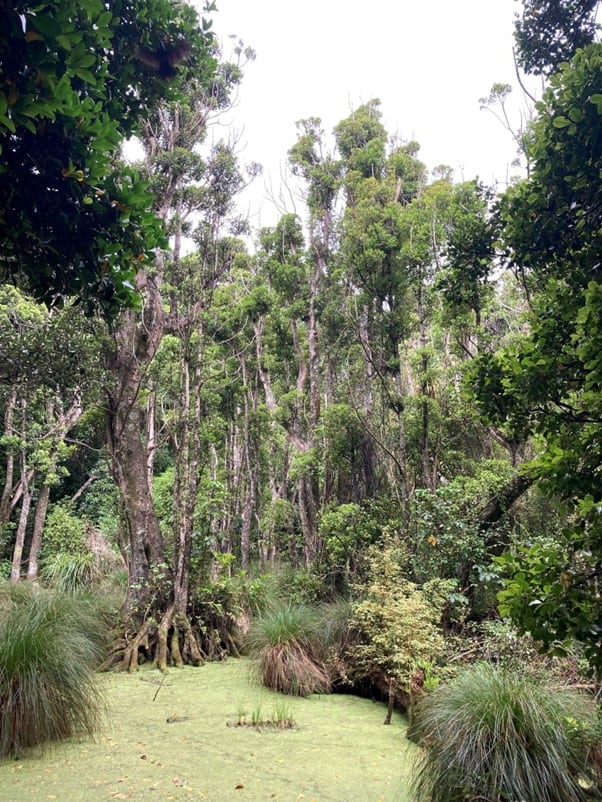
Council grants supporting environmental sustainability
Council has a number of grants and mechanisms to support environmental sustainability throughout the Kāpiti Coast.
The Heritage Fund helps landowners manage and protect heritage features including historic buildings, ecological sites, geological sites, significant trees or waahi tapu.
The Riparian Fund encourages better management of our waterways by preventing stock access and the permanent retirement of riparian margins to allow the establishment of native vegetation buffers.
Supporting Community Conservation Groups
There are roughly 30 groups and individuals carrying out restoration projects on Council land. These projects are a mix of trapping, weed control and planting.
Council supports these projects by providing labour through our Environmental Restoration Officers, as well as plants and plant protectors.
Climate Emergency Action Framework
The above activities are part of the Climate Emergency Action Framework. This framework sets out the overarching vision, objectives and principles Council follows when we make decisions about climate change mitigation and adaptation.
Council adopted the framework on 29 July 2021, following public consultation as part of our Long-term Plan 2021–41. The framework aligns with the community outcomes of the Long-term Plan 2021–41, and are based on feedback we’ve received from Iwi, residents, businesses, and other stakeholders for the past several years.

